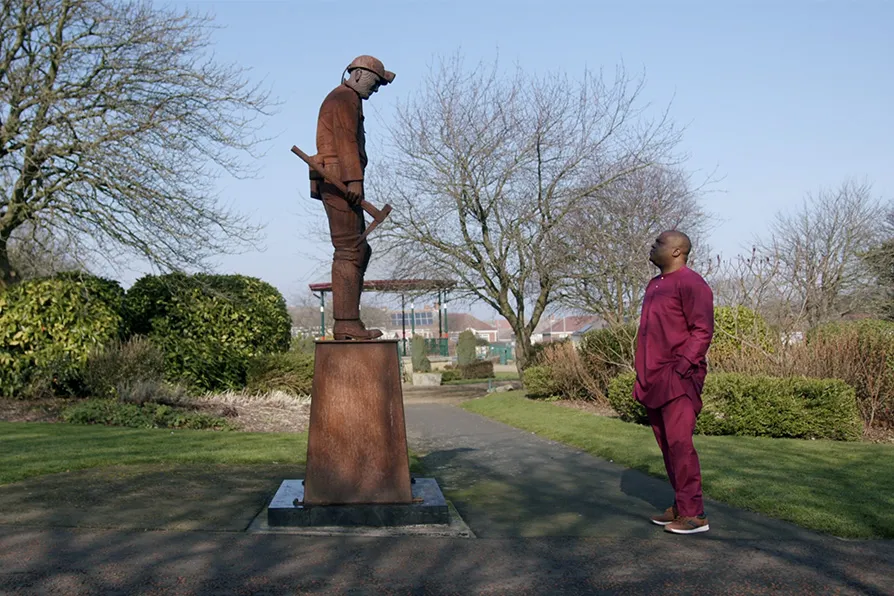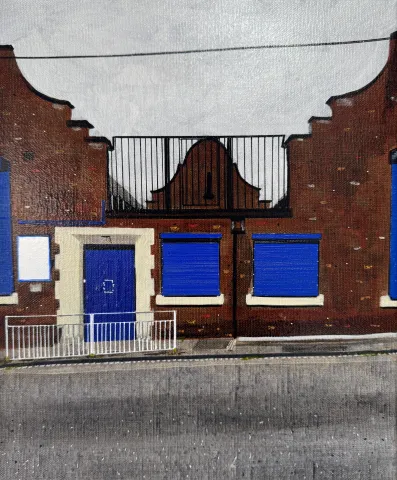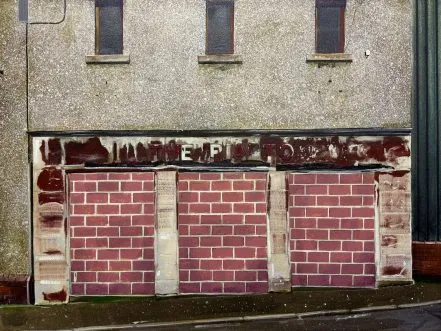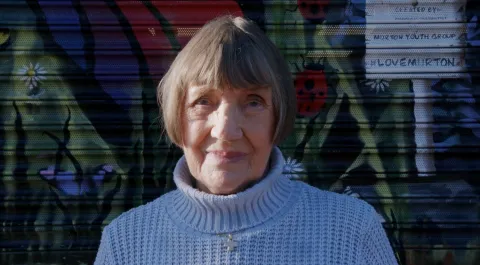ANDY HEDGECOCK and MARIA DUARTE review Good Night, and Good Luck: Live from Broadway, Becoming Victoria Wood, Hamnet, and Song Sung Blue
MIKE QUILLE applauds an excellent example of cultural democracy: making artworks which are a relevant, integral part of working-class lives

 RESILIENCE: Joseph from Horden, a still from a film by Carl Joyce, forming part of the installation Going Back Brockens [Pic: Courtesy of the artist]
RESILIENCE: Joseph from Horden, a still from a film by Carl Joyce, forming part of the installation Going Back Brockens [Pic: Courtesy of the artist]
Going Back Brockens: Monuments And Rhetoric After The Miners’ Strike
Miners Gala, Durham
★★★★★
COMING BACK BROCKENS is pit slang for when the pillars of rock supporting the roof are broken by the retreating pitmen, after the coal has been dug out. It can also apply to the pitmen themselves, returning from the pit exhausted or injured.
Going Back Brockens: Monuments And Rhetoric After The Miners’ Strike is the title of a brilliant exhibition which is being shown in the field at today’s Gala in Durham.
Through a combination of paintings, spoken word and short films, it explores the memories, reflections and feelings of local people living with the collapse of the coal industry in the 1980s and ’90s, and the resulting breakdown of coalfield communities.

And although it’s firmly rooted in the history and lives of people in the Durham coalfield, it would work just as well in the central belt of Scotland, south Wales, parts of Yorkshire and Nottinghamshire — and, for that matter, Lorraine, Silesia or Kentucky. These are the “left-behind” neighbourhoods of late capitalism, brutally “brocken” and with high rates of unemployment, sickness, poverty, crime and drug and alcohol abuse.
Marking 40 years since the miners’ strike, local artist Narbi Price has painted 40 everyday scenes across the Durham coalfield — empty landscapes, bricked-up windows, fences and railings, and barbed wire.
The paintings evoke emptiness and blocked opportunities, broken dreams and painful memories. The emptiness expresses deindustrialisation — the sudden flight of capital from the area, leaving whole communities without much employment, income or purpose.

Perhaps the emptiness also expresses the sad lack of leadership by the Labour Party — its failure to represent working-class hopes and aspirations, and the palpable sense of being abandoned by investors and politicians which has helped far-right parties like Reform UK breed and flourish, locally and nationally.
As Price says of the traumatic effect of the pit closures: “Its ghost is unavoidably there in the places we live, in the layout of the streets, in the ubiquitous half winding wheel monuments, in a peculiar mixture of anger and sentimentality. I think that globally the left is crying out for charismatic leaders, figureheads that people can invest their hope into.”
The paintings have titles which are taken from the accompanying sound installation created by Mark Hudson. It comprises snatches of interviews conducted for his 1994 book Coming Back Brockens (Vintage, 1995), written at a time when the pit closures were still very raw in the collective memory. The voices are from Horden, a large pit village which at one time employed several thousand men and was one of the biggest and most productive pits in Europe.
As Mark Hudson says: “They’re real people talking about important stuff that happened to them, at a time when ordinary people were effectively taking on the British government from their kitchen tables, a few years after the event and they’re trying to make sense of it.”
So as you look into the paintings, you’re also hearing the raw, emotional voices of local people relating stories and feelings which mesh with the visual art. These stories are the “rhetoric” of the subtitle, accompanying the “monuments” of empty landscapes and blocked views depicted in the paintings.
The striking absence of people in the paintings is immersive — it draws you into the paintings, and they become settings for the memories, thoughts and feelings of the people in the interviews that you’re hearing. And those memories combine with your own memories of the past, of the busy and lively working-class communities before their devastation by Thatcher and the untamed market forces of late capitalism.

Alongside the paintings and spoken words are six short, poignant films by local film-maker Carl Joyce, about present-day inhabitants of pit villages. The characters and their stories vary, but common themes emerge, most notably a deep, aching sense of sadness combined with a certain resilience — a determination to look forward as well as back, and to cope as positively as possible with a troubling situation.
As Carl Joyce says: “That sudden absence of industry led to a lack of jobs, which then triggered a chain reaction — poor housing, rising crime, drug use and a general sense of decline. That lack of investment has lasted for 40 years and it’s created a cycle that’s very hard to break. But with real, sustained investment, change is possible.”
Overall, the paintings, spoken words and films work in your imagination like a ghostly play, weaving themes of brokenness and partial healing across time and place. The paintings and the voices from the past illustrate each other, and both are echoed by the contemporary images and voices in the films. It is a moving, imaginative symphony, as tender and truthful a piece of community-based art as has ever been made about coalfield communities.
Credit must go to the curators from No More Nowt, a community arts project which is encouraging communities across Co Durham to host their own exhibitions, capturing more stories, memories and reflections about life in a post-mining era.
It is an excellent example of cultural democracy, of making artworks which are a relevant, integral part of working-class lives, without patronising or twisting the truth of the lives, memories, and struggles of our class.
After exhibition at the Gala, Going Back Brockens will be shown in Horden, at St Mary’s Church, the “Miners’ Cathedral.”
For more information see: nomorenowt.org.
An extended version of this review, including interviews with the artists, is available at culturematters.org.uk.

JOHN GREEN welcomes a remarkable study of Mozambique’s most renowned contemporary artist

BLANE SAVAGE recommends the display of nine previously unseen works by the Glaswegian artist, novelist and playwright

SYLVIA HIKINS casts an eye across the contemporary art brought to a city founded on colonialism and empire

ANGUS REID applauds the ambitious occupation of a vast abandoned paper factory by artists mindful of the departed workforce










